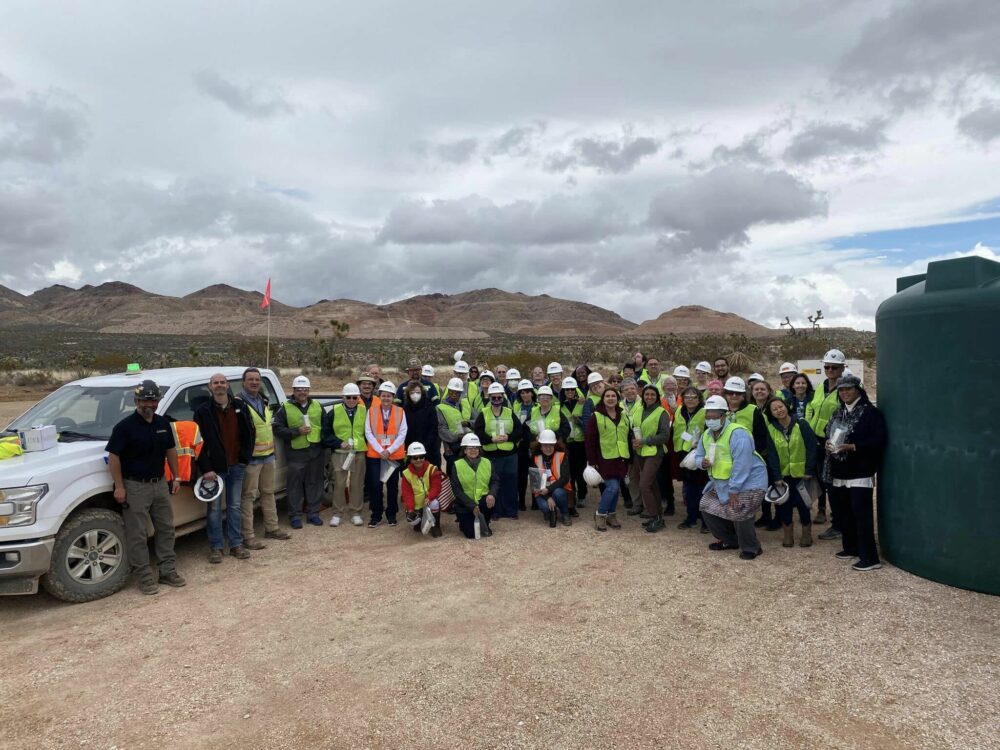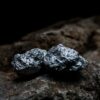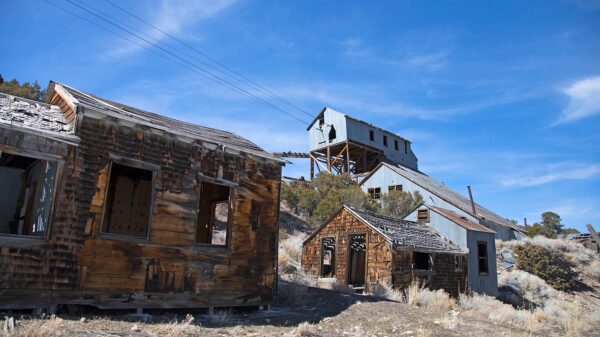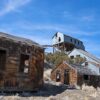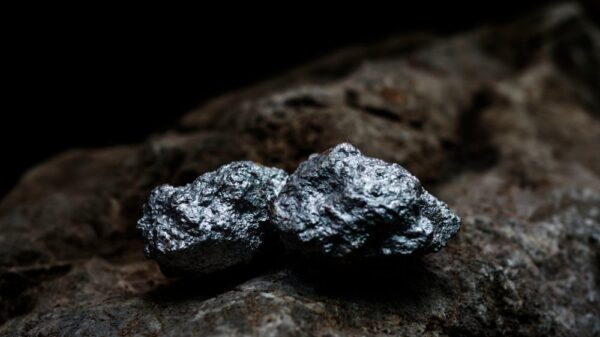i-80 GOLD CORP. (TSX: IAU) (NYSE: IAUX) reported high-grade poly-metallic results from its drill program at its Ruby Hill Property in Eureka County, Nevada.
The company said on Wednesday that its current drill program is focused on defining and expanding high-grade mineralization in multiple target areas, including the Blackjack and Hilltop Zones.
The mineralization included both Skarn and Carbonate Replacement Deposits (CRD). Skarn is a rock formed from altered carbonate rocks, often near valuable mineral deposits. CRD is a type of ore deposit created when carbonate rocks are replaced by valuable minerals like lead, zinc and silver. The program also aims to advance metallurgical work associated with these deposits.
The most recent drilling in the Blackjack Zone found high-grade mineralization at depth in the southern portion of the deposit, where it is open for expansion. This intercept came from the first hole drilled from the east side of the Archimedes pit.
Blackjack Zone highlights include:
iRH23-42
- 8.3 per cent Zn, 0.6 per cent Pb, 50.1 g/t Ag, and 0.6 g/t Au over 20.1 meters
iRH23-42A
- 10.1 per cent Zn, 0.6 per cent Pb, 37.0 g/t Ag, and 0.3 g/t Au over 116.3 m
- 16.3 per cent Zn, 0.5 per cent Pb, 42.3 g/t Ag, and 0.3 g/t Au over 39.7 m And 14.5 per cent Zn, 1.0 per cent Pb, 59.9 g/t Ag, and 0.2 g/t Au over 16.3 m
iRH23-43B
- 16.1 per cent Zn, 0.1 per cent Pb, 12.4 g/t Ag, and 0.5 g/t Au over 16.1 m Also 12.2 per cent Zn, 0.1 per cent Pb, 20.1 g/t Ag, and 0.9 g/t Au over 8.6 m
Skarn mineralization in the Blackjack Zone occurs near the contact of the Graveyard Flats intrusive, with a similar geological setting at the East Hilltop Skarn Zone located approximately 300 meters to the south.
“Recent drilling has returned some of the highest-grade mineralization to-date in the Blackjack Zone as we continue to step-out to the south and at depth,” said Tyler Hill, chief geologist of i-80.
“Additionally, following the construction of the new drill stations better suited to intersect the East Hilltop Zones, substantial CRD and Skarn mineralization is being defined highlighting the potential to expand mineralization in these recently discovered zones.”
i-80 Gold is drilling in the Upper and East Hilltop Zones, located along the Hilltop fault structure in zones of previously identified mineralization spanning approximately 750 meters in length, including the Upper, Lower, and East Hilltop Zones.
As part of the company’s ongoing drilling campaign, it is actively drilling several holes to find more of polymetallic mineralization at Ruby Hill. This work is being funded by a third-party company that recently entered into an exclusivity deal with i-80 to acquire a minority joint venture interest in the Ruby Hill Property.
Read more: Calibre Mining joins Mining Association of Canada
Mined grades are among highest in any CRD district
The Eureka (Ruby Hill) Mining District boasts a history of producing high-grade polymetallic CRD since the 1860s, spanning over a century. Historical mined grades are among the highest in any CRD district globally. Since the 1960s, exploration in the Eureka District has primarily focused on Carlin-type gold deposits, overlooking the CRD potential.
The Ruby Hill Property represents one of the company’s key assets and houses the central processing infrastructure in the Battle Mountain-Eureka Trend’s Eureka District. This infrastructure includes an inactive leach plant, an operational heap leach facility, and hosts multiple gold, gold-silver, and polymetallic deposits.
i-80 isn’t the only company operating in the state looking to draw riches from both gold and previously ignored CRD deposits.
Ridgeline Minerals Corp. (TSXV: RDG) (OTCQB: RDGMF) (FSE: 0GC0) reported the remaining results form its five hole drill program at the Selena project in White Pine County, Nevada. It’s returned broad intercepts of silver, lead, zinc and gold. Individual assays returned up to 795 grams per tonne.
Meanwhile, Coeur Mining, Inc.(NYSE: CDE) operates the Rochester Mine, located in the Humboldt Mountains near Lovelock, Nevada, as a heap-leach surface silver and gold mine. The property comprises 9,724 acres of mineral claims in the historic mining town of Rochester, Nevada.
This mine employs conventional open-pit mining methods and processes ore from surface stockpiles using cyanide heap-leaching to produce silver-gold bars. In 2012, the mine achieved a production of 2.8 million ounces of silver and 38,066 ounces of gold, with a grade of 0.55 oz./ton silver and 0.0047 oz./ton gold, while maintaining a total production cost of $14.05 per ounce of silver.
The company commenced silver and gold production from its new Stage VI leach pad in mid-September. Nearly one-third of the eight million tons of ore on the new pad is undergoing leaching, and the Merrill-Crowe plant is achieving a flow rate of approximately 3,500 gallons per minute (gpm) of solution. The full ramp-up to reach commercial production levels of around 13,000 gpm is anticipated in early 2024.
Over the summer, Calibre Mining (TSX: CXB) (OTCQX: CXBMF) expanded its resources north and south from the open pit at its Pan Gold Mine in Nevada.
The Vancouver-based gold miner reported high-grade drill results above its mineral resource grade. The company announced new results from the Dynamite North and Palomino targets. These two areas, along with the new Coyote target south of the open pit, continue to show potential for increased resources and high grades at Pan.
Analysts from Haywood Securities were “gobsmacked” by the consistency of gold mineralization in the high-grade drill results reported by Calibre from the Palomino target. The Pan mine, located in the Battle Mountain – Eureka gold trend, is an open-pit operation following the Carlin-style approach.
.
Calibre Mining is a sponsor of Mugglehead news coverage
.

